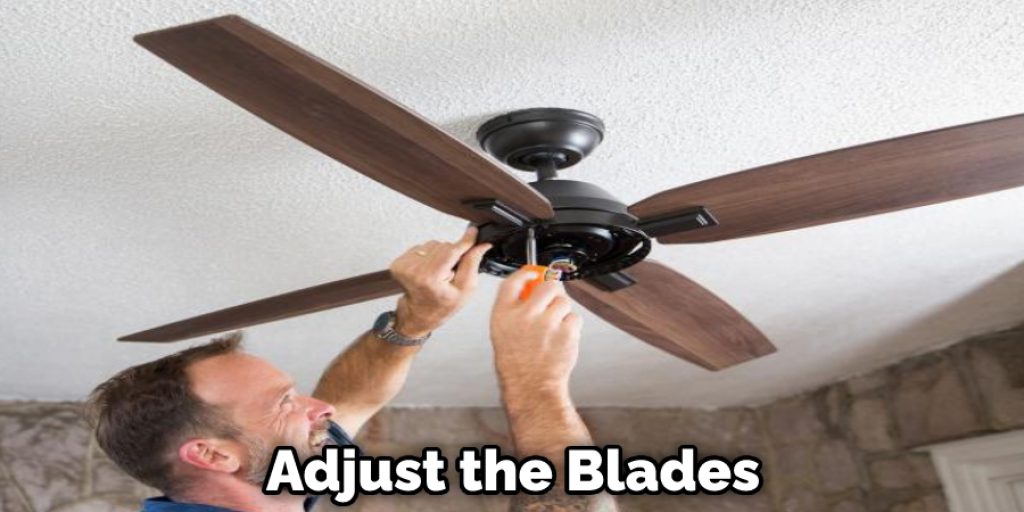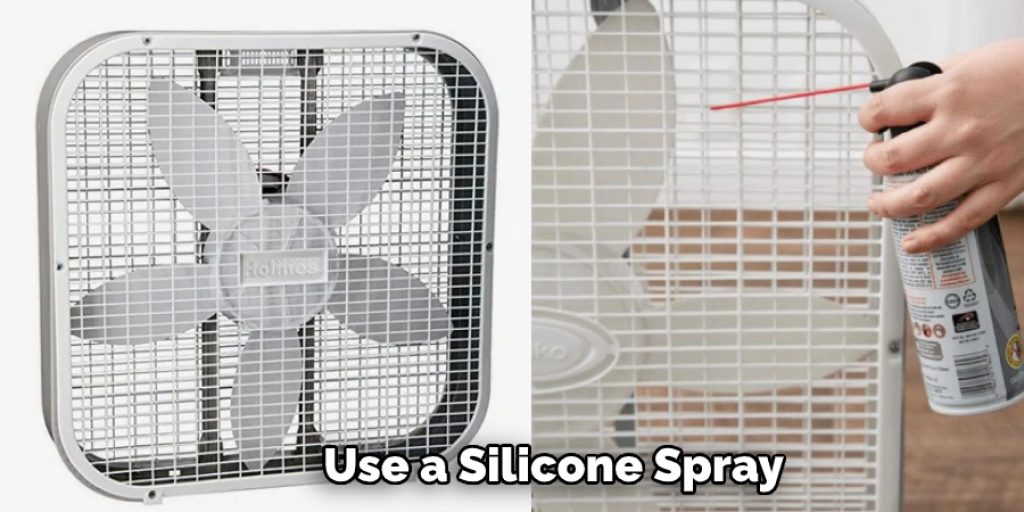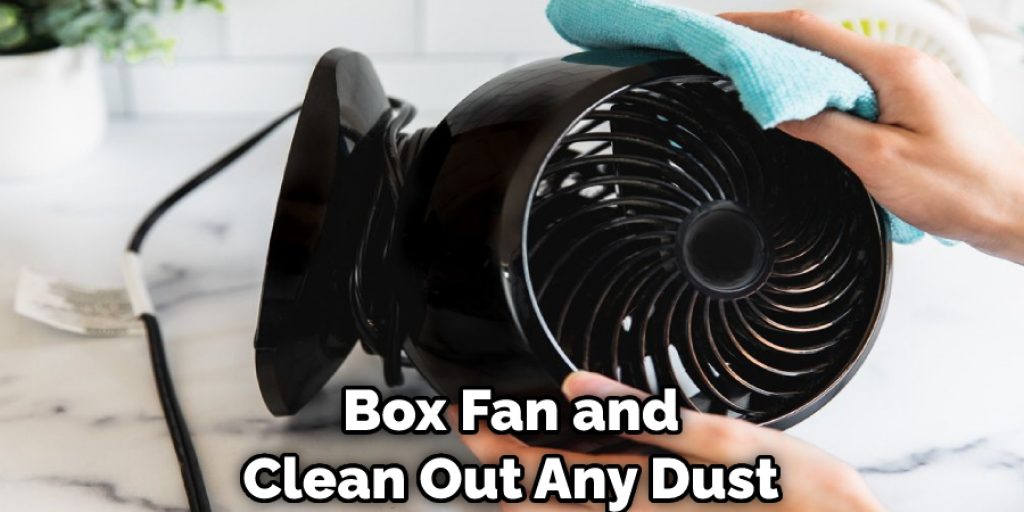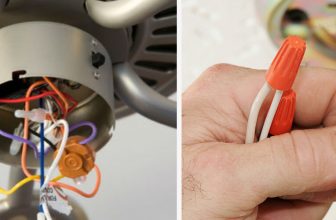How to Make a Box Fan Quieter
Do you have a box fan that is just too loud? A box fan is a type of fan that uses an air foiler to produce airflow. The airfoil blades (also known as impeller blades) rotate on an axle and radially move air. Airfoils are different from propellers because they only move air in one direction, not back and forth like a boat propeller.

Box fans can be pretty loud, especially when they’re running at full speed. But don’t worry, there are several ways to reduce the noise level. In this blog post, we’ll outline some methods on how to make a box fan quieter that you can use to make your fan quieter. We’ll also provide some tips on choosing the right fan for your needs.
What is Causing the Noise?
Before we dive into the methods for reducing fan noise, it’s important to understand what is causing that loud sound in the first place. In most cases, the noise comes from the blades of the fan moving through the air. As they rotate at high speeds, they create a lot of turbulence and vibration, resulting in that familiar whirring or humming sound.
The noise can also be amplified by the fan’s housing, as well as any loose components or dirt and debris that may have accumulated over time. It’s important to identify the source of the noise before attempting to reduce it.
You’ll also want to consider the type of fan you have. For example, older box fans tend to be louder due to their design and materials used. Modern box fans may have quieter motors and blades, making them a better option if noise is a major concern for you.
Needed Materials:
Screwdriver:
To make your box fan quieter, you’ll need a few materials. First and foremost, you’ll need a screwdriver. This will be used to open up the fan for cleaning or to make modifications.
Lubricant:
Lubricating the moving parts of your fan can help reduce noise and improve its overall performance. You can use either oil or WD-40 for this purpose.
Foam Tape:
Foam tape is an excellent material for reducing noise. You can use this to dampen any vibrations from the fan’s housing or other components that may be causing excessive noise.
Noise-Cancelling Earplugs:
If you’ve tried all the methods and your box fan is still too loud, you may want to consider using noise-canceling earplugs. These are designed to block out external noise and can be helpful for individuals who are sensitive to loud sounds.
How to Make a Box Fan Quieter: 10 Methods for Reducing Noise Level
Method 1: Choosing the Right Fan
If you’re looking for a box fan, we recommend that you try to find one with a single rating of 1.0 or below. Then, you can look up the decibel level of each model on the box in which it came. Alternatively, you can use this one rating chart to find the quietest fan possible. For comparison, a typical conversation has a noise level of around 60 decibels.
Method 2: Avoiding Mounting Holes
If you do not plan to mount the fan, which most people don’t, then try and find one with deep rubber pads around the feet. The lack of mounting holes means that the feet are always flush with the surface, preventing vibrations or clatter. This also helps to reduce noise. It is also important to choose a location for your fan that won’t amplify noise, such as a hardwood floor or near a corner.
Method 3: Adjust Box Fan Blades
The easiest way to make your fan quieter is to adjust the blades. Most box fans have three blades that are attached to a metal rod. If you’re able to turn the rod by hand, you should be able to tighten or loosen each blade until they are positioned at an angle, resulting in less turbulence and, thus, less noise. You can experiment with different angles to find the one that works best for your fan.

Method 4: Speed Control
If you find that your box fan is too loud even when you carefully adjust the blades, then try to find a model with variable speeds or one with an adjustable knob. You can reduce the speed to make it quieter, but be careful because reducing it too much will cause the fan to not properly cool you. You can also purchase a separate speed control switch if your fan doesn’t come with one.
Method 5: Keep The Fan On A Level Surface
If your fan is vibrating or making noise, you should place it on a leveled surface. This could be on the floor, on top of some books, or even on your desk. Make sure that you place it on a flat surface rather than slanted or bowed, which will only allow the fan to vibrate even more. If necessary, you can use rubber pads to level the fan and prevent any vibrations.
Method 6: Minimize Noise With An Isolation Pad
If you cannot get your fan to stop making noise, consider buying an isolation pad. Isolation pads are rubber stands that help insulate the box fan from surface vibrations and noises. Unfortunately, they do not come with box fans, so you must purchase them separately. There are two significant types of isolation pads: full pads and four-point contact. The former is better suited for heavy box fans, while the latter is best used to reduce vibrating noise on wooden surfaces.
Method 7: Clean It Thoroughly and Regularly
While you might not notice it, dust and other particles can accumulate on the inner and outer parts of the box fan. This will cause the fan to produce vibrations that you might not have been aware of. Make sure to clean your box fan by wiping it down with a damp cloth daily, and all of the dust and dirt should come off quickly.
Method 8: Use Some Silicone Spray
If you’re looking for a quick fix, try spraying some silicone spray on the fan. First, wipe it off with a damp cloth and then dry it thoroughly to ensure that no water will get near the internal components. This should stop any rattling noises, at least temporarily. Make sure to turn off the fan before spraying it with any liquids.

Method 9: Oil The Fan Motor
If none of the above methods work, you can try oiling your fan motor. The process works by lubricating the fan’s blades and the axle, which attaches it to the base, allowing them to run more smoothly. It will also make sure that there are no squeaking sounds when you turn on your box fan. Remember to use a lubricant designed for small motors and not just any household oil.
Method 10: Tighten Loose Screws or Knobs
If the problem is with screws or knobs that are loose, then simply tighten them. You can do this by using a screwdriver to turn them in a clockwise motion. If you have any difficulties doing so, then ask someone for help. You should also periodically check and tighten any screws or knobs to ensure that they do not become loose again. This will help prevent any unnecessary noise from your box fan.
Following these methods should help you significantly reduce the noise level of your box fan. However, if all else fails, you can always consider investing in a quieter model or using noise-canceling earplugs to block out the noise. Remember to regularly clean and maintain your fan to prevent any buildup that could result in excessive noise.
Some Tips and Suggestions to Reduce Fan Noise:
Here, we have given some tips on how to make a box fan quieter.
1. Lightly sand the fan blades with medium-grit sandpaper. This will remove any loose material and smooth out any small imperfections that might be scratching the fan’s surface, reducing noise.
2. Use an adhesive or paste wax to coat the inside of each blade to help prevent them from making contact with one another as they spin, helping to reduce noise even more.
3. Wrap the fan’s axle with high-temperature tape to make it less wobbly and ensure a snug fit in the stand, reducing noise. This will also increase its life expectancy since too much wobble can cause damage to the axle over time.
4. Use rubber (or neoprene) washers between the fan’s stand and motor housing to reduce noise even more. Washers will help create a snug fit in the stand so that there is no wiggle room. Wobbling can cause damage to the fan over time, resulting in increased noise.
5. Open up your box fan and clean out any dust or dirt that could be affecting its performance. Again, this will increase the fan’s life expectancy and reduce noise.

6. If you’re using a box fan in your room or other areas where quiet is key (e.g., office cubicle), use an oscillating fan instead of a typical standing desk or tower fan to help cut down on distracting noise. This will help you stay focused and productive without the added noise pollution.
7. If your fan is still making too much noise, try moving it to another area or shutting it off for a while. You could also use earplugs or white noise generators to drown out any additional sound until the appliance has cooled down enough to resume using it.
Why Are Room Fans So Noisy?
The noise produced by the blades of a fan is known as blade pass frequency (BPF). This sound can be irritating if it occurs at certain frequencies. A common complaint with box fans is the high BPF, which causes them to generate an annoying, high-pitched hum or whine.
A common misconception is that the noise produced by a room fan is the sound of air rushing through it. This noise most likely comes from vibrations created by high frequencies (usually above 2000 Hz) caused by blades hitting the shroud or fasteners. These sounds are most noticeable at low speeds during start-up and shut-down. The higher the number of poles in the motor, typically found on higher-priced fans, the lower the BPF.
Is There a Difference Between Good and Bad Air Flow?
Good airflow would be more along what makes a fan suitable. It provides better cooling and increases ventilation, and it can circulate air throughout a room or area. Bad air flow would mean exactly that bad movement of air through a space. A box fan with bad airflow might not cool down an entire room at all. Bad airflow can also mean that there is a tiny movement of air or that the movement of air is in the wrong direction.
Perhaps the only time when it would be okay to have poor airflow is if you are trying to keep out bugs with an insect screen, but even then, you still want enough ventilation so bugs don’t become trapped in the net. Even when an air conditioner is operating in a room, it helps to have a better airflow, so there isn’t anything in the way of cold air and hot air mixing.
Which Is Better: Direct or Convection Fans for Cooling?
It works by having air move directly across an object, which takes away its heat or moves the air to feel cooler. To make a fan quieter, you can replace the blades with smooth polyethylene discs or rubber balls (like those used in pinatas). Box fans are simple devices used for cooling the air in a room. They are designed to be portable; some even have wheels attached, so they can easily be wheeled around or carried from one room to another.

There are multiple types of box fans available on the market today that vary in size, portability, and power. All models have a wide range of uses, from the power needed to turn a blade to quiet. For example, you can make a box fan quieter by oiling the motor and replacing the blades with rubber balls or polyethylene discs. Replacement blades are also made from rubber, which won’t rattle when they spin.
Frequently Asked Questions:
Q: Are Box Fans Loud?
A: Box fans can generate noise, but they are generally not considered to be very loud. However, if you notice your fan is making excessive noise, it could be a sign of an underlying issue that needs to be addressed. It’s always a good idea to check for loose screws or debris that could be causing the noise. If the problem persists, consider using some of the tips mentioned above to reduce fan noise.
Q: Can I Use a Box Fan in My Bedroom at Night?
A: It depends on personal preference and how sensitive you are to noise while sleeping. Some people find the white noise produced by a box fan to be soothing and helpful for sleep, while others may find it too loud and disruptive. If you decide to use a box fan in your bedroom at night, consider using one with multiple speed settings so you can adjust the noise level to your liking.
Q: How Can I Tell if My Fan Needs Maintenance?
A: If your fan is making excessive noise or not functioning as well as it used to, it may be time for some maintenance. Check for any loose screws or debris that could be causing the issue. You can also try cleaning out the fan and lubricating the motor to help improve its performance. If these measures don’t work, it may be time to replace your fan altogether.
Q: Can a Noisy Fan Be Dangerous?
A: In most cases, a noisy fan is just an annoyance and not a safety hazard. However, if the noise is caused by loose or damaged parts, it’s important to address the issue to prevent further damage and potential safety hazards. If you’re unsure about the cause of the noise, consult a professional for assistance.
Overall, regular maintenance can help keep your fan running smoothly and quietly while also prolonging its lifespan. So, don’t neglect your fan and take steps to reduce noise levels for a more peaceful and comfortable environment.
Conclusion:
When it comes to finding a quieter and more efficient box fan, we hope you found what you were looking for. There are several ways you can make your box fan quieter. You can purchase a better quality fan, use the right size fan for the room, or place it on top of something that will act as sound insulation, like carpeting. Keep in mind that some people find these fans too loud and choose other options instead.
If this is the case with you, then try one of these methods on how to make a box fan quieter to see if they work for you! If not, please let us know where to find the best options in your area! We want to help make fans less noisy for everyone. If you are looking to purchase a box fan, be sure that the fan has an oscillating base. This will make your new purchase much quieter than traditional models with fixed bases.




